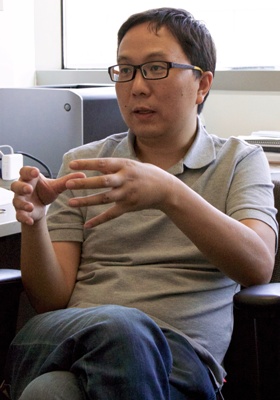Jul 21 2015
Researchers from the California NanoSystems Institute at UCLA have successfully established electroluminescence from multilayer molybdenum disulfide (MoS2) for the first time. Their research is likely to pave the way for the use of a new range of materials in the manufacture of LEDs.
 Xiangfeng Duan. Credit: CNSI
Xiangfeng Duan. Credit: CNSI
Rapid advances in light-emitting diode (LED) technology have resulted in the expansion of the LED product segment ranging from television and computer screens to flashlights in the last few years. Researchers are keen to increase the efficiency of LEDs as its uses multiply and at the same time, simplify its manufacturing process.
MoS2 in its single-layer structure is optically active. In other words it discharges light when it is struck with a non-destructive laser or when electric current is passed through it. In comparison, MoS2 with a multilayer structure is easier and cheaper to produce, however it is not generally luminescent.
In this study, Duan and first author Dehui Li, a postdoctoral scholar in Duan’s lab, developed a multilayer MoS2 device that exhibits strong luminescence when electrical current is transmitted through it.
“We were trying to make a vertically stacked light-emitting device based on monolayer MoS2, but it was difficult to get the efficiency as high as we wanted,” Duan said.
On the other hand, it was rather surprising for us to discover that similar vertical devices made of multilayer MoS2 somehow showed very strong electroluminescence, which was completely unexpected since the multilayer MoS2 is generally believed to be optically inactive. So we followed this new lead to investigate the underlying mechanism and the potential of multilayer MoS2 in light-emitting devices.
Xiangfeng Duan - Professor of Chemistry and Biochemistry, UCLA
The UCLA team used a method known as electric field-induced enhancement, wherein electrons from a dark state are shifted to a luminescent state. This improves the material’s ability to turn electrons into light particles, or photons. This method clearly indicates that the multilayer MoS2 semiconductors the single-layer ones have almost the same efficiency.
Going forward, Duan’s team plans to use this method on similar materials such as molybdenum diselenide, tungsten diselenide and tungsten disulphide with their goal being to help in the development of advanced light-emitting devices using 2D layered materials, which are easier to use in manufacturing as well as cheaper.
This study has been published in the journal Nature Communications on 1 July 2015.